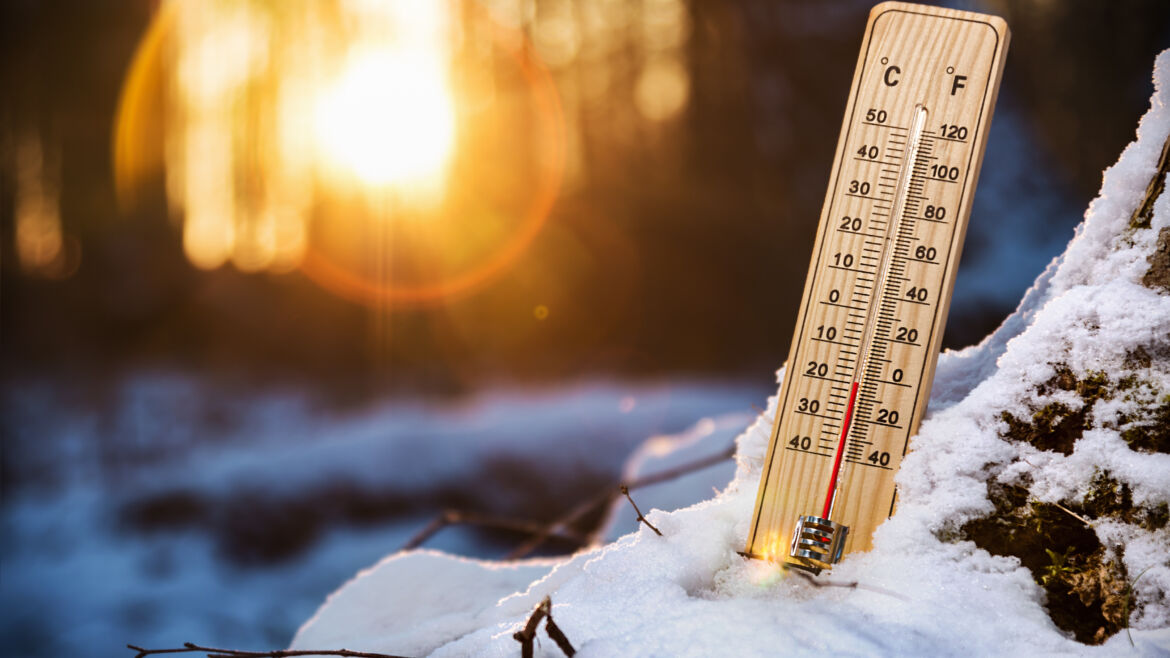How fun is it pole vaulting during the spring time in Northern Illinois?! I hope you can sense the sarcasm. I can only speak to this time of the year in Illinois, but I’m sure that this blog post will resonate with many pole vaulters from different regions across the country. Before you dive into this blog, please understand, as I’m sure you do if you have lived in Illinois or the Midwest for a while, the weather can go every which way, and sometimes you can get lucky with a unicorn vault day in mid March that will line up very well for you to get a good mark in outdoors. They exist, but the point of this post is to help you plan for the worst and hope for the best.
If you find yourself in a difficult spot with your performances and overall mental outlook on pole vaulting during this time of the year, YOU ARE NOT ALONE!!! March and April are notorious months for eating pole vaulters alive, especially if you don’t live in Texas or So Cal.
To be clear I’m not picking on the Texas and So Cal vaulters in this post, I am just poking fun at them! I really respect and love them, and I WAS BORN IN TEXAS! They have produced some of the worlds best pole vaulters throughout history, and I guess my position just comes from a place of jealousy for the beautiful sunshine in So Cal during April and the 80 degree smoking tailwinds at Texas Relays in March, but I digress.
Back to the Midwestern spring…
The constant bombardment of cancelled meets due to weather or meets that should have been cancelled due to weather in the Midwest, can throw even the most tough individuals into a tailspin. The spring weather will slowly start to turn your indoor season high into an outdoor season slump if you don’t take the proper steps to guard yourself from the beast that is Illinois spring weather. Hopefully some of these tips will be able to get you through to the magic of May without too many hiccups.
ACTION STEPS: ACCEPT, REFOCUS, AND EXECUTE
Don’t freak out! Your pole vaulting powers have not just magically disappeared. Sit down, close your eyes, take a deep breath, and say, “I do know how to pole vault”. The hundreds if not thousands of reps that you have done up to this point don’t go away easily. Your reps stay with you for a long, long time, so don’t think that you will forget to pole vault overnight. Ok, so let’s break down these three action steps…
ACCEPT….
You have to come into full acceptance of the situation during the early outdoor season in Illinois. Stop fighting against it and just accept that this is where your vaulting is going to be for a little bit. So many vaulters fight so hard to convince themselves that they will not have to drop down poles and grips when there is a 50 mph crosswind and it is spitting snow. WHY?!?!?! Seriously, just accept it and adapt. Just because you have to drop down to a smaller pole today doesn’t mean you are going to be using it for the rest of the season. You need to be able to adapt to the unique requirements of each individual meet to find success. If you don’t, these meets will chew you up and spit you out. You are not committing to these changes forever, just for the day. That reminds me…Don’t put a time frame on this period of adjustment like, “All I have to do is get through the next week or the next month and the weather will turn and I will be like new again”. Unfortunately you have no control over the weather. Your job is to not count on their being certain weather for certain days. Just take them as they come. Some springs are really great and the weather turns in late April, sometimes it doesn’t turn until mid May. Bottom line is, you can’t control it, so you need to release it and accept that this is where you are and you are going to be ok.
REFOCUS…
If you are spiraling, you need to refocus and create a plan that is going to help you get out of the early outdoor season unscathed and set you up for the May magic. You are going to have to make some serious adjustments to your expectations for a little while. If you expect yourself to have a personal best while your eyes are getting pelted with snow and your cheeks are flapping in that 30 mph headwind as you run down the runway, you are delusional.
When you are devising this plan, make sure that it is rooted in process goals and not outcome goals. A technical process goal should include specific technical cues like “Hands up” at take off, or “See my feet at my top hand” in my rock back. Having these simple cues will be very important when you are up against a difficult weather situation, or maybe having a difficult time transitioning to the visuals of outdoor pole vaulting. I remember when I went from the indoor season to the outdoor season, it would take me a week or two to get use to the new visual. What I would do is use visual cues to help focus my attention on specific parts of the technical process so that I was not letting the “big picture” overwhelm me. For example, I would focus on seeing my feet at my top hand, instead of just rocking back and seeing that giant blue sky. Seeing the huge sky instead of the ceiling of an indoor facility would be overwhelming to me specifically during the transition to vaulting outside since the visual was so different. By focusing my attention to something more specific like seeing my feet at my top hand, I would feel more comfortable and it maintained my special awareness much better.
Cues can get out of hand if you are not careful. You shouldn’t have a million cues when you pole vault or you will experience information overload while you are running down the runway. We have found that the sweet spot for remembering and executing cues is usually three. Pick three cues that are very general and stupid simple if you find yourself in a rut. This combination worked for me “Jump up, see your feet, turn”. If you have put in the reps, your body will know how to fill in the blanks. When vaulting into bad winds or if your hands are too cold to even pick your pole up, it is going to be much easier to focus on these big, general, gross movements rather than focusing on the tiny details that don’t really “move the needle” in the grand scheme of things.
Your plan also needs to involve the most important piece of the transition to outdoor season puzzle which is making the proper adjustments to your approach, pole size, and grip height. Here are a couple examples of adjustments that you may need to make. If you are freezing cold, you are not going to run as fast. If you can’t run as fast, you are not going to be able to grip the same height on the same poles as you would if your muscles were warm and firing on all cylinders. If you are at a meet where the wind is not desirable (strong head or cross wind), you may need to adjust your start mark on your approach to accommodate for that. Makes sense, right??? To be more direct, if you are transitioning to the outdoor season, don’t just assume that your indoor season numbers (pole size, grip, approach length) are going to transfer over to the outdoor season immediately. You are going to have to put your pride aside for a little bit and “drop down” until this transition period is over. Here is an example of the many issues that these “numbers” adjustments can help with. A popular “transition to outdoor season issue” is the depth perception of the box being too close or too far away. A simple fix for that one is to drop your grip REALLY low while you get use to it. If you feel like you are too far away from the pit, bring your start mark up a bit to help you feel closer. If you feel too close, do the opposite. Boom! I bet that helps a lot of people.
So if you are in a rut and are dangling your feet in the box after every jump this time of year, here is a good starter plan. Drop down to a six inch shorter pole than what you normally use, drop down five pounds in the weight rating of your pole, lower your grip by a fist, and adjust approach length accordingly. Again, this is just a starter, and it doesn’t mean you will be using this for the long term. These numbers will eventually come back to normal, and most likely improve outdoors, but you need be ok with taking a step back for a bit in order to take steps forward later in the outdoor season. If you start small and work your way up, you will come out of this transition period much stronger, but if you are stubborn and don’t make the proper adjustments, you will come out of it discouraged and defeated.
Another thing that you may need to adjust is your approach length, or number of steps you are running. It is much easier to find the “flow” from a shorter approach, and there may be meets where going from a shorter approach would make much more sense because of the conditions. When a pole vaulter loses confidence, they are missing the flow. They must find the flow. Flow=fulfillment in the pole vault. You may need to have some meets that you run from a short approach to touch base with that flow again. If it is 40 degrees with a smoking headwind, that is a perfect day to try and flow your way to a short approach PR! If you think that there is a possibility of tough weather at your next meet, make sure you pack poles for a short approach scenario just in case. If you don’t have access to these poles, try to get in contact with a pole rental service that has unlimited free exchanges so that you can give yourself the best shot at having the correct pole for the conditions you will be facing.
What we are doing right here is developing a “Plan B”. If all you have is a “Plan A”, you are not in a good position to succeed if the weather is not “Plan A” material. Having dealt with Northern Illinois outdoor seasons for over 20 years, you may even want to develop a “Plan C” too hahaha!
EXECUTE…
You have accepted that you live in the Midwest and there is nothing that you can do to control the weather and your vaulting is going to be a little different for a bit. You have developed your “Plan B” where you adjusted your pole size, grip, and approach. Now it is time to be patient, trust that plan, and execute. You should develop plans for many different scenarios and enact them when appropriate. If the weather is cooperating, TAKE ADVANTAGE OF IT!!! If your training says its not a vault day but it is beautiful out, guess what, today just became a vault day!!!! If you are suppose to vault today but it is terrible weather, you may want to see if there is another day that would work for your vault day that week. While you are doing this, it is difficult to make sure you are not “weather chasing” too much though. There is a balance to this, and you can’t be waiting around for perfect days, because you could be waiting the entire season for that. Most importantly, you need to just be flexible and understanding of what the day is going to give you as far as vaulting goes. If the day is presenting a warm tailwind for long approach with big poles and high grips, cool! If it is presenting a cold crosswind for short approach with lower grips on small poles, cool! Just be flexible and understanding.
FYI, there is an alternative to the steps mentioned above. The alternative is to continue to beat your head against the wall and force your “Plan A” to happen. There is the slight possibility if you keep forcing yourself onto the same poles and grips you were using indoors, that you won’t land in the box and miss the pit everyday for two months. You could even find a unicorn day and have the best performance of your life. Unfortunately, I think the odds are leaning more to you hurting yourself, potentially ending your season, or at the least getting extremely frustrated and wanting to quit if you force that “Plan A” too hard. Personally, I’m not rolling the dice on that method.
Also, be aware that the higher you go, the more you will be impacted by these adverse conditions. For example, there is a huge difference between a beginner gripping low and straight poling and someone gripping high to try and vault elite heights. If you are in the beginning stages of pole vaulting, you should expect to still be able to perform pretty well and possibly even continue progressing in height despite tough conditions, because the risk in what you are doing is relatively low compared to a more advanced vaulter. If you are an advanced vaulter and you feel like you may need enact “Plan B” because the weather is not the greatest, you are probably right, and it’s no big deal, you will live to fight another day.
ONE LAST THING….
Following people on Insta that live in warmer climates won’t help make you feel much better about your situation. Also, like I said before, some people in your climate may have found a unicorn day and had a huge PR. Seeing that on IG might make you feel like you are doing something wrong. If you are applying the steps above, you are in good shape, and you should just stay aligned with your new plan. Stay in your lane and don’t worry about what other people are doing. If you can handle social media, it’s a really cool thing, but if you find that it is causing you stress or possibly derailing you from your plan, take a break from it.
So there you have it! Now you have some tools to help you survive the beginning of the midwestern outdoor track season. I love Illinois, and our weather really puts the ILL in Illinois. In the end, I think that battling with these conditions does nothing but make you a tough individual. I think the biggest take away from this blog is that it is not impossible to vault WELL during these tough weather months, but it is very hard to vault HIGH during these times, and you need to be able to understand the distinction between these two things. If you apply the above strategies though, and you maintain your “flow” (aka technically vaulting WELL on smaller poles) during these tough times, once the weather breaks, it will be as simple as putting the right pole in your hand and you will fly high once again.




